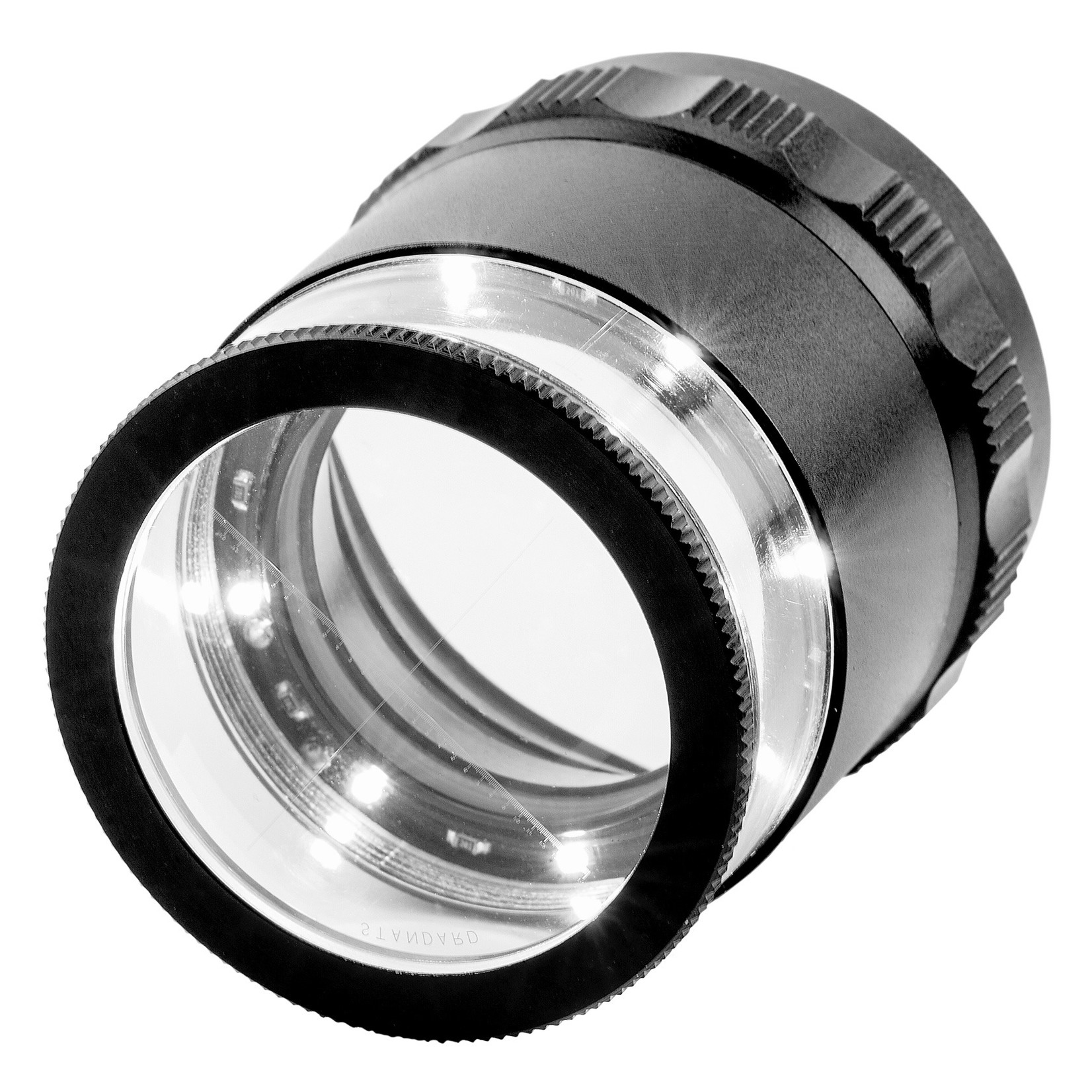KIMAG-10 LED precision measuring magnifier with achromatic (colour error corrected), coated optics consisting of 4 elements and 2 assemblies. The measuring scale is made of glass and has a graduation of 0.1 mm at 30 mm measuring length. A ring consisting of 8 LEDs is built into the housing, which ensures bright and high-contrast illumination of the measuring field. The contradiction between high resolving power and wide field of view has been completely eliminated in this product, providing powerful, precise control. For higher transmission, the lenses are coated with an anti-reflective coating.
Excellent image quality thanks to achromatic white glass optics, which are colour-length error corrected and distortion-free right to the edge, and the newly developed 8 LED ring illumination set standards in this price class. The delivery includes batteries and a case.
There are 15 additional scales in black and 14 scales in white to choose from for this measuring magnifier.
Magnification: 10x
Field of view: 34 millimetres
Graduation: 0.1 mm
Length of measuring scale: 30 mm
Eyepiece: 20 millimetre
Size: 46 x 44 millimetres
Net weight: 74g
In optics, an achromat is a system of two lenses consisting of glasses with different Abbe numbers (different degrees of dispersion). The system contains a converging lens (usually made of crown glass) and a diverging lens with a smaller Abbe number and thus stronger dispersion than the converging lens (usually made of flint glass). This allows the longitudinal colour error that every simple lens has to be corrected for two wavelengths, i.e. the system has the same cut-off for these two colours.
Instructions-battery-replacement-kimag-10-gb.pdf







